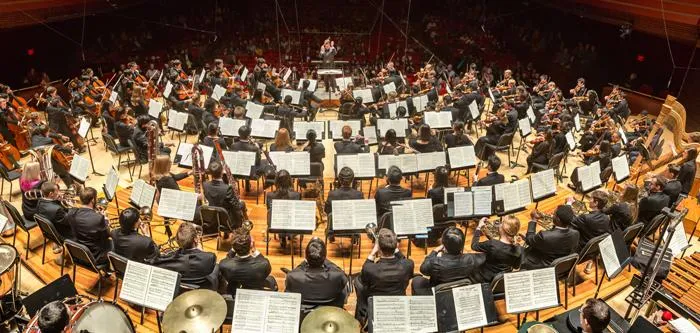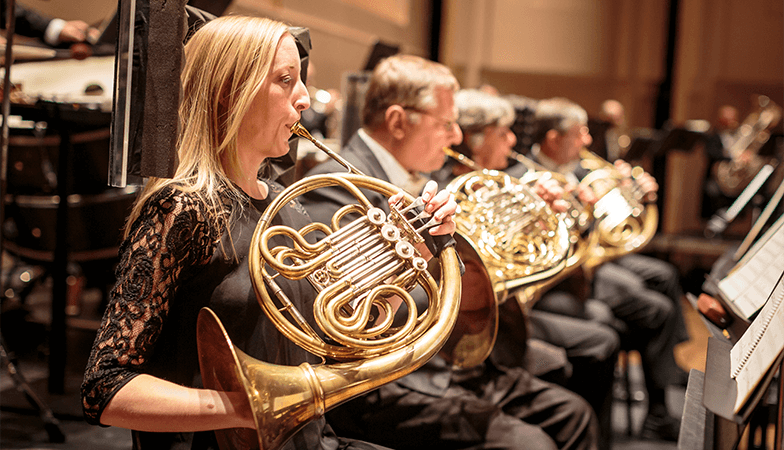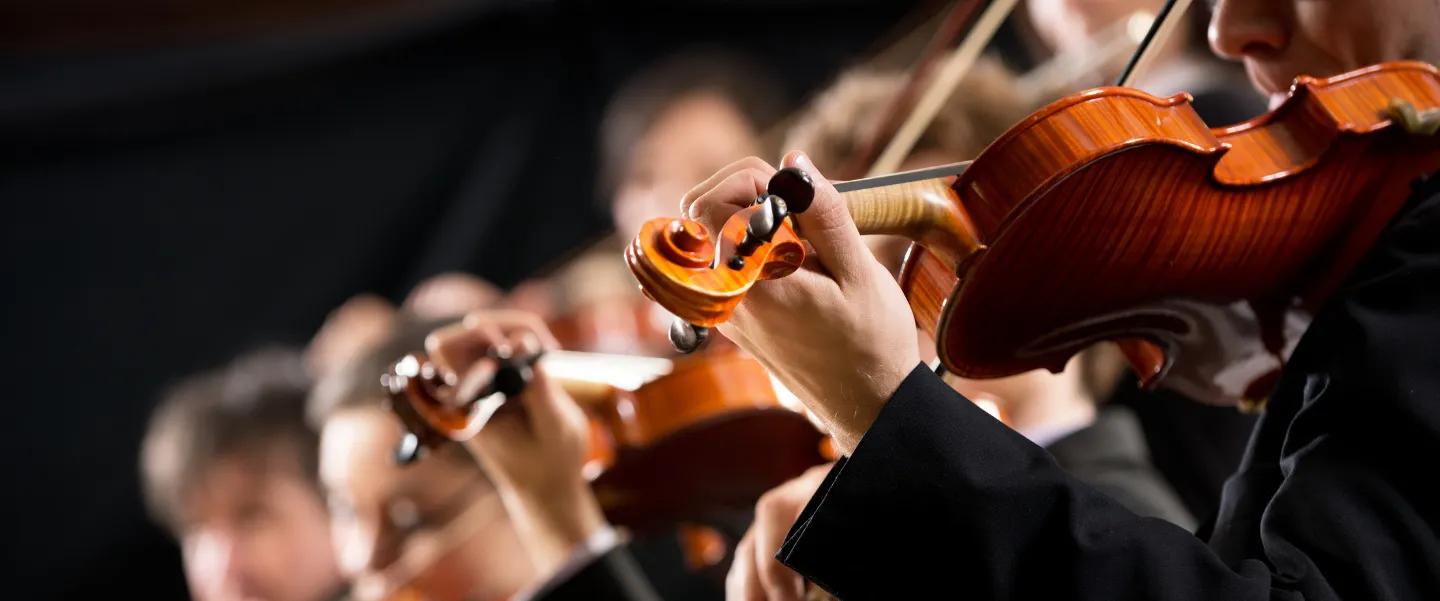
Orchestra Instruments
Orchestra Instruments, with its rich and diverse array of instruments, stands as a testament to the power of collaboration and harmony in music. In this article, we embark on a journey through the captivating world of orchestra instruments, uncovering the unique sounds, histories, and roles of each instrument in creating the symphonic masterpiece.
The Melodic Tapestry of the Orchestra

String Instruments: The Heartbeat of the Orchestra
- Violin: The violin, with its sweet and soaring tones, serves as the cornerstone of the orchestra’s string section. Dating back to the 16th century, the Violin’s Versatility and Expressive capabilities have made it a beloved instrument in classical music, capable of conveying a wide range of emotions and moods.
- Viola: Slightly larger than the violin and possessing a warmer, deeper tone, the viola adds depth and richness to the orchestra’s sound. Often playing the inner harmonies and counter melodies, the viola provides essential support and color to the ensemble.
- Cello: The cello, with its soulful and resonant voice, occupies the middle range of the string section, bridging the gap between the high-pitched violins and the deep bass of the double basses. Renowned for its expressive capabilities and lyrical melodies, the cello is often featured in solo passages and chamber music settings.
- Double Bass: As the largest and Lowest-Pitched member of the string family, the double bass provides the foundation and rhythmic backbone of the orchestra. Its deep, rich tones anchor the ensemble, lending a sense of gravity and power to the music.
Woodwind Instruments: Winds of Melody and Color
- Flute: The flute, with its shimmering and ethereal tones, is a staple of the Orchestra’s Woodwind section. Capable of producing agile runs, delicate trills, and Expressive Melodies, The Flute adds brightness and sparkle to the ensemble.
- Clarinet: Known for its warm and mellow timbre, the clarinet brings depth and richness to the orchestra’s sound. With its versatile range and expressive capabilities, the clarinet is featured prominently in both classical and contemporary music repertoire.
- Oboe: The oboe, with its distinctive reedy tone, adds a touch of poignancy and drama to the orchestra’s sound. Often featured in solo Passages and Expressive Melodies, the oboe evokes a sense of longing and Introspection.
- Bassoon: As the lowest-pitched member of the woodwind family, the bassoon provides a solid foundation and rhythmic pulse to the orchestra. With its deep, resonant tones and agile articulation, the bassoon adds depth and character to the ensemble.

Brass Instruments: The Power and Majesty of Brass
- Trumpet: The trumpet, with its bright and penetrating sound, commands wdbos attention and heralds grandeur in the orchestra. Renowned for its brilliance and power, the trumpet is often featured in Fanfares, Majestic themes, and Triumphant Melodies.
- Trombone: With its bold and noble tones, the trombone brings depth and gravitas to the orchestra’s brass section. Capable of producing majestic fanfares, lyrical Melodies, and Expressive Glissandos, The trombone adds richness and warmth to the ensemble.
- French Horn: The French horn, with its warm and velvety timbre, lends a sense of Elegance and Refinement to the Orchestra’s sound. Renowned for its expressive capabilities and lyrical melodies, the French horn evokes a sense of romance and nostalgia.
- Tuba: As the largest and lowest-pitched member of the brass family, the tuba provides the foundation and weight to the orchestra’s brass section. With its deep, resonant tones and powerful presence, the tuba adds depth and grandeur to the ensemble.
Percussion Instruments: Rhythmic Pulse and Colorful Texture
- Timpani: The timpani, or kettle drums, provide the Rhythmic Heartbeat of The Orchestra, anchoring the ensemble with their powerful and resonant tones. Capable of producing a wide range of dynamic effects, from thunderous rolls to delicate taps, the timpani add drama and excitement to the music.
- Snare Drum: With its crisp and sharp articulation, the snare drum adds rhythmic drive and intensity to the orchestra’s sound. Often used to accentuate accents and punctuate musical phrases, the snare drum brings energy and vitality to the ensemble.
- Cymbals: The cymbals, with their Shimmering and Metallic tones, provide color and texture to the orchestra’s percussion section. Capable of producing a wide range of dynamic effects, from delicate crashes to Thunderous Crescendos, the cymbals add drama and excitement to the music.
- Xylophone: The xylophone, with its bright and percussive tones, adds a touch of whimsy and playfulness to the orchestra’s sound. Often featured in Virtuosic Passages and lively dance rhythms, the xylophone brings joy and exuberance to the ensemble.
Unity in Diversity
The orchestra’s diverse array of instruments represents a Harmonious Convergence of sound, color, and texture, each contributing its unique voice to the ensemble. Together, they create a tapestry of melody and harmony that captivates audiences and inspires awe and wonder. Whether soaring Melodies, Rhythmic pulses, or Colorful Textures, each instrument plays a vital role in bringing music to life, reminding us of the power of collaboration and unity in diversity.
Exploring the Pros and Cons of Orchestra Instruments: Balancing Harmony and Complexity
Orchestra instruments form the backbone of classical music, enriching compositions with their diverse timbres and expressive capabilities. In this article, we delve into the advantages and Disadvantages of Orchestra instruments, Examining the unique Characteristics and challenges associated with each.

Advantages of Orchestra Instruments:
- Richness of Sound: Orchestra instruments offer a vast array of timbres and tones, Allowing Composers to create rich and complex musical textures. From the soaring melodies of the violin to the Majestic Fanfares of the trumpet, each instrument contributes its unique voice to the ensemble, adding depth and color to the music.
- Expressive Capabilities: Orchestra instruments are highly expressive, capable of conveying a wide range of emotions and moods. From the tender lyricism of the cello to the bold Assertiveness of the Trombone, each instrument possesses its own expressive palette, allowing performers to infuse their interpretations with nuance and feeling.
- Versatility and Flexibility: Orchestra instruments are versatile and adaptable, capable of performing a wide range of musical styles and genres. Whether performing classical symphonies, jazz standards, or contemporary film scores, orchestral musicians possess the technical skill and artistic flexibility to tackle diverse repertoire with precision and flair.
- Collaborative Opportunities: Orchestra instruments provide opportunities for collaboration and ensemble playing, fostering teamwork and camaraderie among musicians. From chamber music Ensembles to full Symphony Orchestras, performers must work together to achieve unity of sound and interpretation, creating a sense of synergy and cohesion in their performances.
Disadvantages of Orchestra Instruments:
- Technical Complexity: Orchestra instruments require years of dedicated practice and study to master, with each instrument presenting its own set of technical challenges and demands. From mastering difficult fingerings and bowings to developing a nuanced understanding of tone production and phrasing, musicians must invest significant time and effort to achieve proficiency on their instrument.
- Physical Demands: Orchestra instruments can be physically demanding to play, requiring strength, stamina, and dexterity to perform at a high level. Long hours of practice and rehearsal can take a toll on musicians’ bodies, leading to fatigue, strain, and the risk of repetitive stress injuries.
- Cost and Accessibility: Orchestra instruments can be expensive to purchase or rent, posing financial barriers to aspiring musicians, particularly those from low-income backgrounds. Additionally, access to quality instruments and instruction may be limited in some communities, further Exacerbating Disparities in music education and participation.
- Intonation and Ensemble Challenges: Orchestra instruments must navigate challenges related to intonation and ensemble balance, ensuring that individual voices blend harmoniously within the ensemble. Achieving precise intonation and balance requires careful listening, adjustment, and coordination among musicians, presenting ongoing challenges in rehearsal and performance.
Conclusion: Striving for Artistic Excellence
In conclusion, orchestra instruments offer a wealth of advantages in their ability to produce rich, Expressive, and Versatile musical sounds. However, they also present challenges related to technical complexity, physical demands, Accessibility, and Ensemble Coordination. By recognizing and addressing these challenges, musicians can strive for artistic Excellence and create performances that inspire and uplift audiences around the world. Ultimately, the rewards of Mastering an Orchestra instrument far Outweigh the challenges, offering musicians the opportunity to express themselves creatively and connect with others through the Transformative power of music.
Read More Article About “Antony Blinken in China: Urging the U.S. to Support, Not Suppress, Development“








